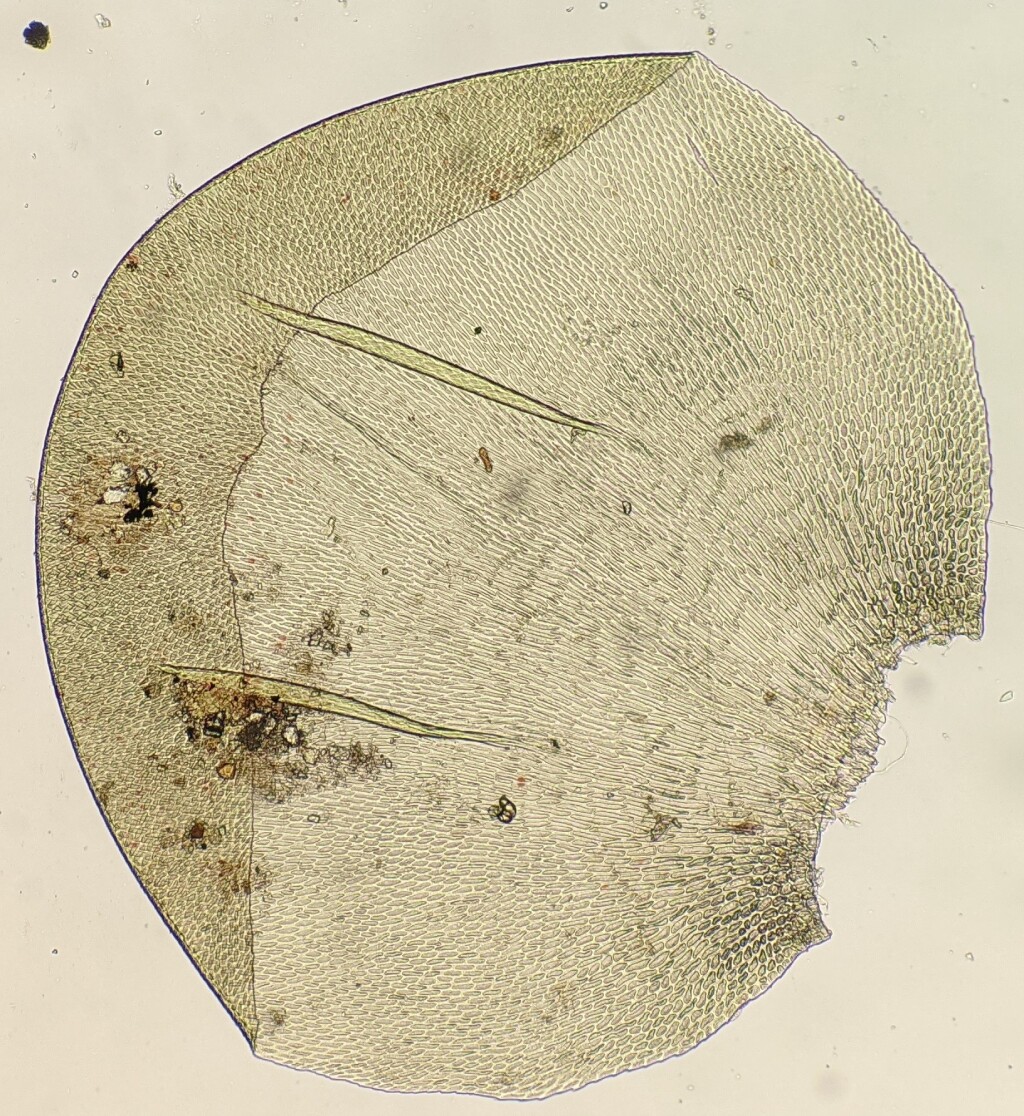Lembophyllum
Dioicous or phyllodioicous. Asexual propagules absent. Mats or wefts on rocks, tree trunks, logs and soil. Stems differentiated into creeping primary stems and erect to scrambling secondary stems, with ventral tufts of reddish-brown rhizoids in leaf axils where in contact with substrate and at flagelliferous branch tips; pseudoparaphyllia foliose; central strand indistinct but present in all axes; secondary stems weakly to strongly differentiated into a basal stipe section and a sparingly bipinnately branched frond section; branches blunt to loosely cuspidate, often attenuate. Branch leaves usually smaller than stem leaves, leaves otherwise uniform, ovate to orbicular, inserted around stem and facing all directions, julaceous, erect- to wide-spreading when moist, scarcely altered, erect-spreading or appressed when dry, deeply concave; apex obtuse or rounded, cucullate, without a hair-point; costae weak, double and failing in basal half, single, extending 2/3–3/4 leaf length, shorter and divided 2–3 times, or absent; margins serrulate or entire near base, plane; laminal cells linear to rhombic, becoming quadrate to rectangular near base and often quadrate at apex, prorate; alar cells weakly differentiated, quadrate or irregular, sometimes pigmented, forming a small poorly defined group. Capsule horizontal, symmetric or curved, ovoid to obloid, with a weakly differentiated annulus. Calyptra cucullate, smooth, glabrous. Opercula conic or apiculate. Exostome teeth without a distinct shoulder; endostome equal to or greater than exostome height, with basal membrane 1/4–1/3 exostome height; cilia present.
Two species in New Zealand and eastern Australia; two species in Victoria.
The number of species within Lembophyllum has been disputed due to uncertainty regarding boundaries with the similar genus Weymouthia and whether the two current species treated here warrant recognition as separate species. Lembophyllum clandestinum (Hook.f. & Wilson) Lindb. and L. divulsum (Hook.f. & Wilson) Lindb. have traditionally been distinguished based primarily on costae form and presence and absence. However, costae features are variable within otherwise similar plants leading Sainsbury (1948) to treat both Lembophyllum species as synonymous. Despite the costae being unreliable at consistently distinguishing the two species, when combined with the other features established by Tangney (2008) and used here in the dichotomous key to species, the two species can be reliably distinguished.
 Spinning
SpinningSainsbury, G.O.K. (1948). Synonyms of some New Zealand mosses. Revue Bryologique et Lichénologique 17: 79–85.
Tangney, R.S. (2008). A review of Lembophyllum Lindb. (Bryopsida: Lembophyllaceae). Journal of Bryology 30: 41–47.

